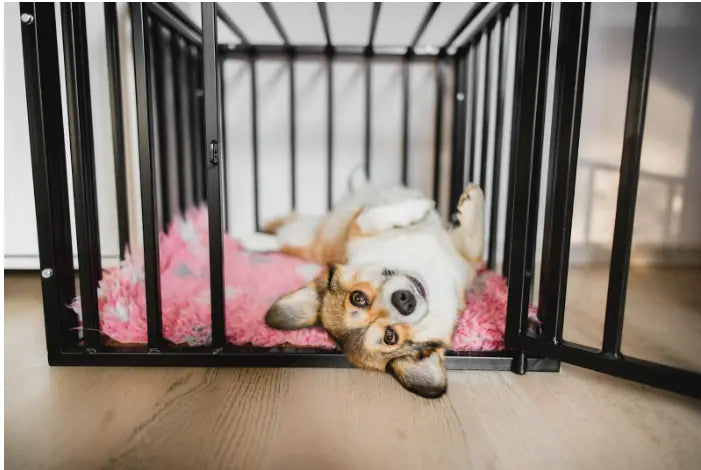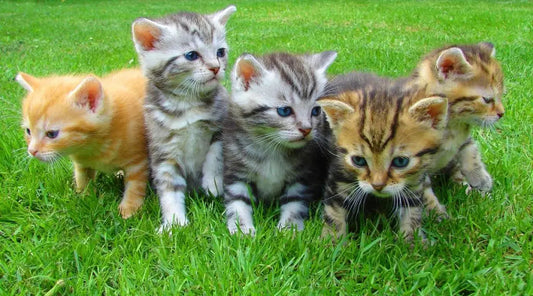
How to Use Dog Treats for Training Like a Pro
Dogs just wanna have fun—and we love them for it. But their boisterous nature makes following commands a bit tough. Most pups would rather careen around the living room than sit and stay.
But to help pets and people live in harmony, training has to happen. Of course, no one should (or needs to) resort to harsh methods. Dog training treats get the job done. With a stash of goodies, rapid training progress becomes a breeze.
If you’re new to the process, however, you’re probably wondering how to use dog treats for training. It’s simple once you understand the role of treats in training: Let’s explore a few helpful tips.
Why Dog Treats Are Essential for Training
With few exceptions, food motivates dogs. The prospect of a tasty morsel can compel even the most unruly puppy to perk up their ears and pay attention.
Needless to say, this tendency makes dog treats the perfect tool to reinforce positive behavior.
Additionally, there’s nothing unclear about a treat. Your puppy knows them and loves them. They also make the experience of training fun, rather than grueling. With scrumptious nibbles on offer, your puppy will look forward to training time.
And science backs this up.
Russian neurologist Ivan Pavlov, the originator of the “classical conditioning” theory, demonstrated that dogs can learn to associate a neutral event (like a bell’s chime), with a reward. Substitute a command for the sound of a bell, and you have modern dog training.
Treats also help teach dogs in a way that feels natural. They’re a powerful tool for teaching dog behavior in a positive, results-driven format.
Choosing the Right Dog Treats for Training Success
Of course, what counts as a tantalizing treat for one pup won’t necessarily strike the fancy of another—in addition, you should train with dog-specific treats. You’ll need to pinpoint which rewards get your pup’s mouth watering, and which leave them unimpressed.
-
For best results, try a few types of treats for dogs and gauge their response.
-
When you find a nibble that consistently gets tails wagging and eyes on you, you’ve found a winner.
-
If you’re lucky, and your pup possesses an exceptional zest for food, you may have multiple options.
Your environment also plays a role. If it’s just the two of you training in the living room, lighter fare (like carrots or blueberries) can get the job done.
In addition, keep your housemates in mind: If you have cats, make sure they have their own treats to keep them occupied during dog training time. Can dogs eat cat treats is a common question, and while the occasional mix-up usually isn’t harmful, it’s best to stick with species-specific options when training.
When surrounded by a symphony of park noise or the call of fellow canines, you’ll need some seriously mouth-watering goodies to hook their attention.
Best Dog Treats for Quick Rewarding and Motivation
While individual preferences vary, the best dog training treats share a few common traits:
-
Bite size – To avoid going overboard with calories (and to make transport easy) stick with mini food treats.
-
Scrumptious – Tantalizing flavor—that’s what gets tails wagging at training time. Dogs can’t resist fresh, simple ingredients (like pure organ meat).
-
Healthy – Your pup’s well-being comes first. Aim for a blend of nutrition and flavor.
If you’re a raw dog food enthusiast, don’t worry—there are excellent options that check all three boxes above made from raw meat:
-
Freeze-Dried Raw Beef Liver Treats – Featuring nothing but grass-fed beef liver, these freeze-dried liver dog treats pack top-notch nutrition alongside delectable flavor. Travel-size and shelf-stable, they make ideal training rewards. So, can cats eat dog treats? Not all of them, but these treats are cat-safe.
-
Freeze-Dried Raw Chicken Hearts – Made with human-grade meat, these chicken heart treats come loaded with protein, and raw freeze-drying preserves their dense nutrient content.
With irresistible treats on hand, you’ll have no trouble keeping your pup pumped and primed for training.
How to Use Dog Treats Effectively in Training
Learning how to use treats to train your dog takes practice. While food motivation goes a long way, it helps to have a game plan going in.
Fortunately, starting with the right approach makes the process much simpler.
Timing and Frequency of Treats for Positive Reinforcement
When training a dog, you want to reinforce any response that resembles the desired behavior, even if it doesn’t perfectly match up. Dog trainers refer to this as “shaping.”
When shaping, you aim to break the final behavior into smaller, achievable steps. After each step, reward them with a treat.
For example, if you’re trying to get your dog to obey the “sit” command, you might reward them first for simply paying attention, then for sitting (even if only for a moment), then for remaining in the sitting position until you tell them otherwise.
-
When starting out, give them a treat and shower them with praise each time they demonstrate the behavior. Trainers call this “continuous reinforcement.”
-
Once they consistently perform, start dialing back the treats and praise. For example, reward them every other time they obey, then every third time, and so on.
-
As you progress, change up the treat timing to keep your dog on their toes. They’ll learn that if they keep performing, they’ll eventually receive the reward.
At first glance, this may seem like a complicated process. But once you get started, you’ll quickly get a feel for it and see results. Over time, you’ll need to rely less on treats—verbal praise will be enough.
Treats as a Reward for Specific Commands and Behavior
Above all, training with treats calls for consistency. As your best friend in the process, you’ll want to reserve them for training sessions.
Ideally, you want your pup to associate munchies with good behavior. If you hand out goodies at other times, your dog may grow confused—hold them in reserve for practice sessions.
Another tip: Stockpile “high value” treats for new behavior, or to reward especially challenging tasks. This could look like offering light nibbles for well-learned behavior, and doling out beef liver or chicken heart treats for fresh tasks.
Common Mistakes When Using Dog Treats in Training
Once you’ve mastered the training approach, smooth your path to training success by avoiding the frequent pitfalls of training. These include:
-
Dispensing treats too slowly – Let’s face it: Dogs don’t have extended attention spans. To help them associate behaviors with treats, swiftly deliver their reward.
-
Luring with treats – Don’t tempt your dog with a treat just to get them training. Keep treats in your pocket, out of view, until they successfully perform.
-
Rewarding bad behavior – When your dog disobeys, it’s tempting to use treats to coax them back into compliance. Unfortunately, this links treats to mischief.
-
Handing out goodies to get attention – Your dog may ignore you at times. Don’t use treats to get their attention. It sends the message that ignoring you yields a payout.
-
Training in distracting environments – If your surroundings teem with diversions, even high-value treats may fail to entice them.
-
Overtreating – While treat training is highly effective, make sure you’re staying within the recommended number of dog treats per day. (This is important for cat treats too, too.)
As far as training tools go, treats top the list. But using them the wrong way, or at the wrong time, can counteract your efforts or reinforce negative patterns. Follow these tips to make training easy and fun for your pup. They’ll encourage good behavior and prevent confusion over time.
What to Do If Your Dog Isn’t Food-Motivated
Most dogs love food, but not all. If your pup sniffs the treat and walks away, don’t panic. Training is still on the table, and you just need to find the right currency.
Try different types of rewards: some dogs are more toy-driven or praise-driven. A game of tug or a few moments with a squeaky toy can be just as powerful as a bite of liver. Some dogs even work best for affection or the chance to chase a ball.
Pay attention to what lights your dog up, and use that to your advantage. Training is about what motivates them, not what we think should work.
Other Training Tips
Treats form the backbone of behavior training, but there’s more to the story than a pocket full of nibbles. For best results, remember the following:
-
Keep sessions brief – Like small children, dogs struggle to focus for long stretches. Keep your training sessions quick and punchy (10-15 minutes).
-
Patience, patience, patience – Each dog learns at their own pace. Even if your first few sessions don’t deliver results, stay calm and stick with it.
-
Pay attention to body language – Subtly isn’t really a canine calling card. Studying your dog’s physical cues will help you anticipate their next move.
-
Wear them out first – Tired dogs train more easily. Before a session, take them for a walk or play a game of fetch to burn off some energy.
-
Celebrate the wins – Dog training: It’s more of a marathon than a sprint. Make sure to recognize small victories along the way.
-
Rotate environments – Performing at home counts for little if training goes out the window in a social setting. Reinforce training by regularly switching up the backdrop.
It also helps to target specific negative behaviors you’d like to curb. For most dogs, the prime offenders are:
-
Nipping – Often a reaction to overstimulation or a way to cope with stress, nipping needs to be nipped in the bud.
-
Resource guarding – Some pups view others as a threat to their food or toys. Training can help curb growling or barking when other dogs or guests come around.
-
Separation anxiety – No one likes to be alone, but some pups take it harder than others. Barking, howling, and furniture chewing—all symptoms of solitude.
It’s important to remember that pups who exhibit these behaviors aren’t “bad” dogs—they just need positive reinforcement to reassure them that the world’s a safe place. That’s where compassionate yet firm training really makes a difference.
How to Reinforce Training with Daily Routines
Training doesn’t stop when the session ends—it thrives in your everyday life. Once your dog knows a command, practice it during regular routines.
Ask for a “sit” before mealtime. Use “stay” before opening the door. Call them with “come” to the backyard. Embedding these commands and tricks into real-life situations helps your dog generalize them, making their behavior more reliable in any context.
And because you’re not adding extra time to your day, it’s easy to stay consistent.
Darwin’s: Your Partner in Pet Training
In the wild, dogs roamed in packs, hunting and foraging as a tight-knit band. This lifestyle required discipline and coordination. While training might seem like stifling a dog’s natural instincts, it actually helps them get in touch with their well-honed hunter side.
And in their ancestral state, food served as the prime motivator. It’s no different with modern training. Help your dog tap their wild, and let Darwin’s Natural Pet Products lead the way. Our roster of delicious fresh dog food and healthy treats will keep your pup lean, aligned, and thriving.
Sign up for treat and pet food delivery now!
Sources:
- Ridgeside K-9. Pavlov’s Theory of Classical Conditioning and Dog Training – An Introduction. https://ridgesidek9.com/pavlovs-theory-of-classical-conditioning-and-dog-training-an-introduction/
- American Kennel Club. Shaping: A Fun Way To Build New Behaviors in Dog Training.https://www.akc.org/expert-advice/training/training-tips-shaping/
- AAFCO. Treats and Chews. https://www.aafco.org/consumers/understanding-pet-food/treats-and-chews/


